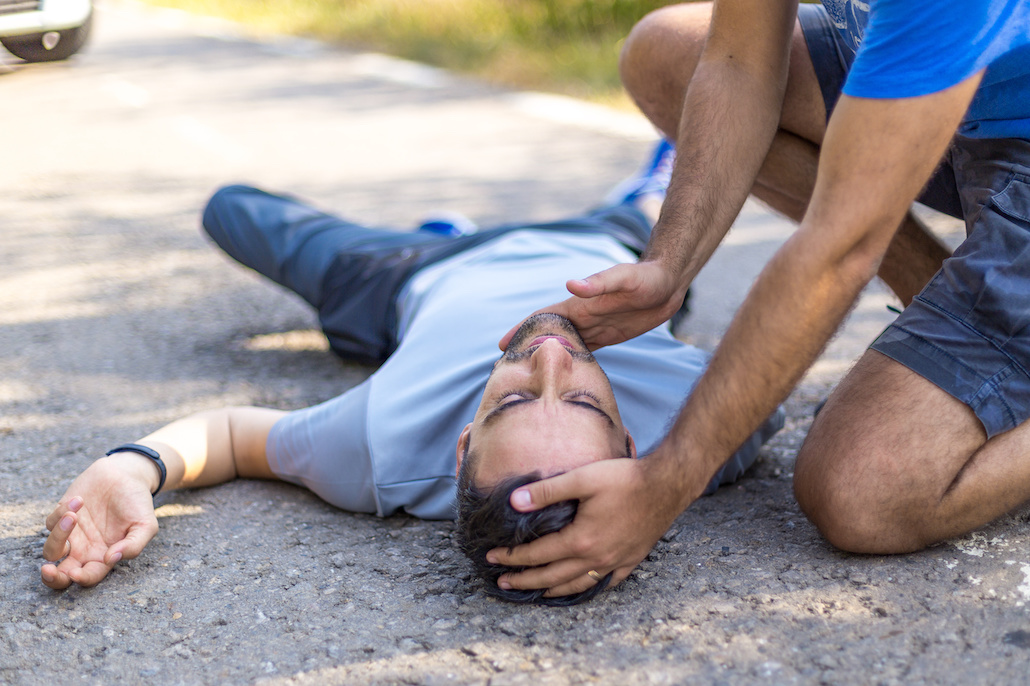Heat Illness: Symptoms, Prevention, and Treatment
Medical TrainingNobody likes to be hot and sweaty on the trail. But when things turn from being uncomfortable to becoming downright dangerous, it’s time for quick, on-the-spot emergency action.
Heat illness is a range of medical conditions that result from the body’s inability to cope with an elevated heat load. When that occurs, it is more commonly referred to as “heat strain.” And whether you’re inactive in a warm, humid environment or participating in strenuous physical activity in the fall or winter, you are at an increased risk of heat illness.

For people who engage in backcountry adventures, heat illness and heat strain are among the many potential health and safety risks. That’s why our instructors at The National Center for Outdoor Adventure Education (NCOAE) include it in our Wilderness Medicine courses. In this post, we bring you up to speed on the basics, including the symptoms to watch for, preventive measures, and treatments to cool an overheated body.
From Bad to Worse on the Heat Illness Spectrum
Heat illness, heat strain, and related injuries occur when the core body temperature becomes elevated, stressing or surpassing the body’s ability to cool itself. Like a nuclear power plant, the human body can suffer serious and potentially fatal damage when its core becomes overheated.
The severity of the condition is on a spectrum generally divided into the following three levels: (more…)
Concussion Recognition and Treatment in the Backcountry
Wilderness Medicine TrainingConcussion recognition and treatment has gotten a lot of attention over the last decade, mostly in the context of youth and professional sports such as tackle football and soccer. It’s even a topic for those who serve in our armed forces. However, confusion over its prevention, diagnosis, and treatment remains widespread.
In an interview with a reporter from the Chicago Sun Times, former National Football League quarterback Brett Favre, who was knocked out cold only once in his 20-year career, claimed that “probably 90 percent” of the tackles he endured left him with a concussion.
He’s most likely correct in that estimation. After all, the definition of “concussion” is broad: “A concussion is a brain injury, a disturbance in brain function induced by traumatic forces, either from a direct blow to the head or a transmitted force from a blow to the body.” It disrupts brain function at the cellular metabolic level but does not result in major structural damage. Conventional MRI or CT scanning will not show evidence of a concussion.
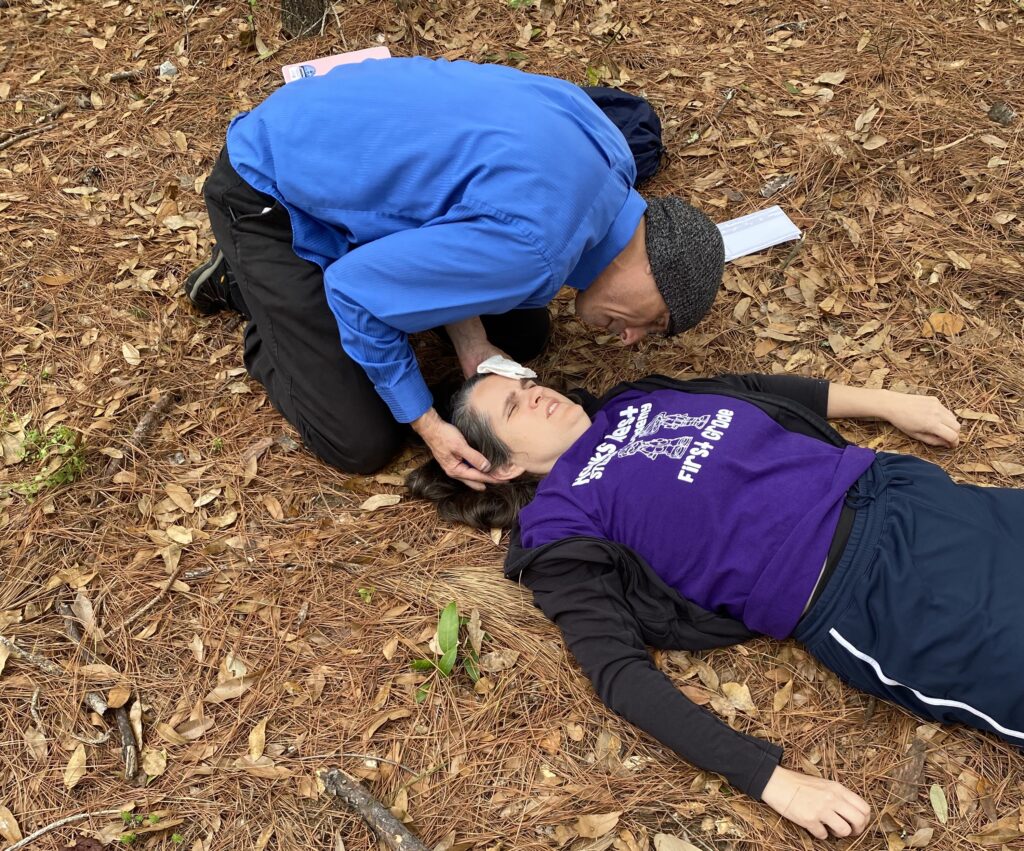
So, how do you know if you or someone else has suffered a concussion while in the backcountry? And, after having made that determination, what should be done? Having clear answers to these two questions is essential for successful recovery and to prevent long-term cognitive and psychological complications. This is true no matter where the concussion takes place, but especially in the backcountry where medical treatment from a full-time team is unavailable. (more…)
Most EMS Terminology Comes Down to Initials, Abbreviations and Acronyms
EMT TrainingA few years ago, we ran a three-part series on slogans, slang, and terminology as it applies to a trio of human-powered outdoor recreational activities. If you recall, we started out with some “gnarly” surfing terms, then we “tied in” to a conversation about climbing, finally pulling a “wet exit” on the language of paddling.
You can review these three articles using the links below:
- From Sept. 20, 2020: Surfing Terminology and Slang: You Can’t Play BINGO Without the Lingo
- From Oct. 10, 2020: On Belay — Climbing Terminology and Slang
- From Oct. 30, 2020: Paddling Terminology and Slang: Nobody Says ‘Up a River Without an Oar’
There was quite a bit of word whimsy in those articles, and we made sure to remind readers that successfully lassoing the linguistics of a particular activity was no guarantee you were mastering that particular sport professionally.
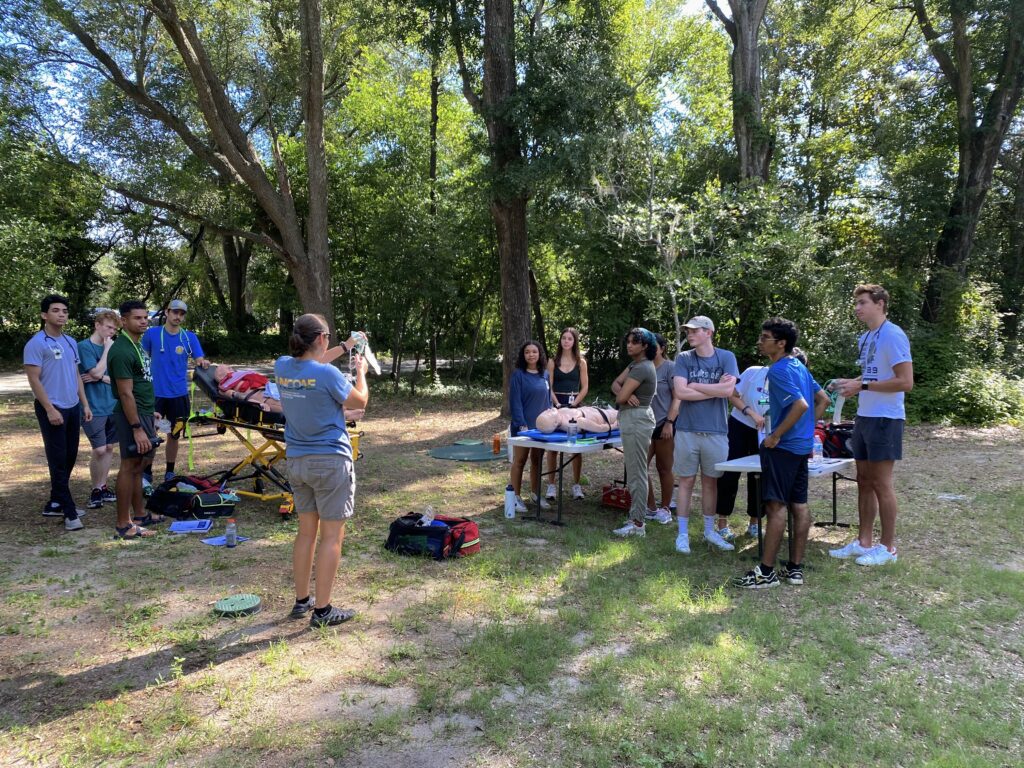
Today we’re taking a more serious look at language, this time highlighting the terminology used by members of the Emergency Medical Service (EMS) community. That’s because one of our areas of focus here at The National Center for Outdoor & Adventure Education (NCOAE) is emergency medicine training and education. And whether you’re an EMS, medical professional, or wilderness first responder (WFR), these terms are most often employed when these professionals find themselves managing a medical emergency.
First off, you might notice that most of these terms come in the form of acronyms, abbreviations, and initials, and the reason for that is to enable first responders to quickly communicate and react with each other and the patient in the field.
The source for these acronyms comes from the NCOAE Wilderness Medicine Field Guide (ISBN 978-0-578-87449-4).
Here, we present them in alphabetical order: (more…)
The Role of the Wilderness First Responder During Water Rescues
Wilderness Medicine TrainingIt may surprise you to learn that drownings — along with heart attacks and falls — are among the leading causes of death for those who venture into the wilderness for recreation or education in the United States.
Statistics show that there are nearly 4,000 fatal drownings each year in the United States, with a little more than 8,000 nonfatal drownings. These figures include boating-related drownings. In fact, the threat of drowning is so prevalent that the first edition of the NCOAE Wilderness Medicine Field Guide devotes an entire section to Environmental Submersion and Drowning Injury.
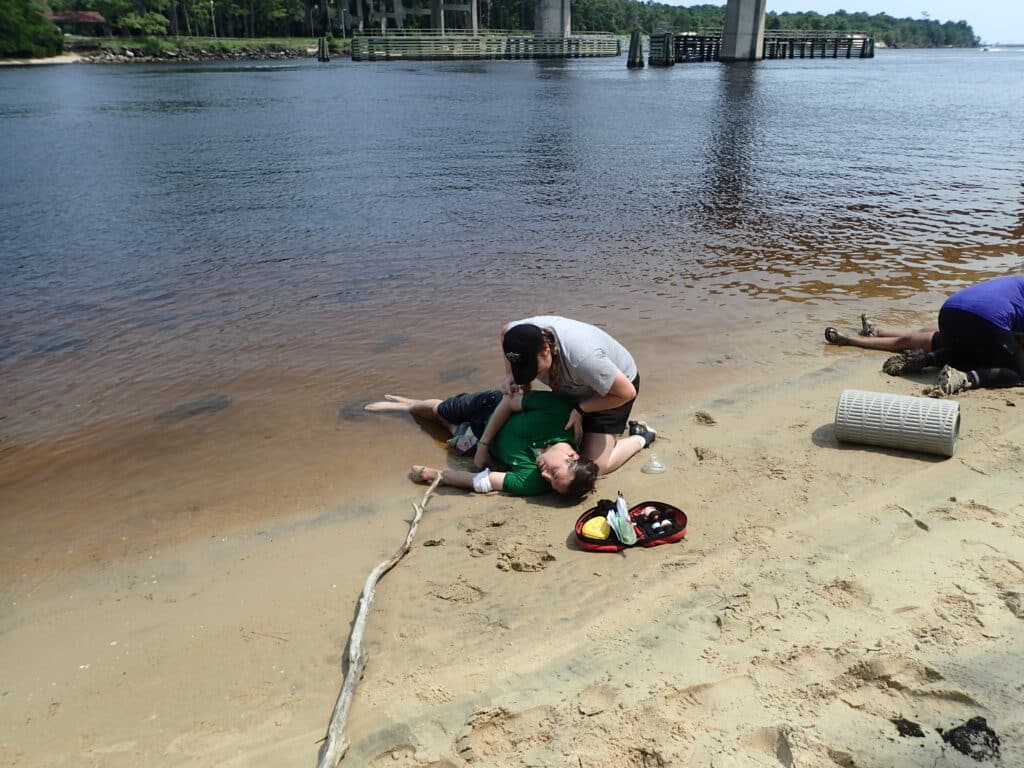
Of course, it’s during the spring and summer that most outdoor explorers are on the water, including those participating in backcountry expeditions. Lakes, rivers and streams provide much-needed relief in the backcountry on a hot August afternoon and are sought-after destinations for many outdoor enthusiasts.
For those training to become Wilderness First Responders (WFR) and those participating in Wilderness First Aid (WFA) training, a major consideration is assisting with medical emergencies that occur on or near the water. (more…)
NCOAE’s EMT Training Opens the Doors to Jobs Across the U.S.
EMT TrainingApplicants to our nationally renowned EMT training courses often ask us if they can take
their new EMT credentials to the state where they live, and the answer is mostly yes.
The National Center for Outdoor and Adventure Education’s (NCOAE) campus is
located in North Carolina, where we offer 21-day “Intensive” EMT-Basic and 23-day
“Intensive” Advanced EMT training courses among others. Successful completion of
these courses authorize our graduates to take the National Registry of Emergency
Medical Technicians (NREMT) exam.
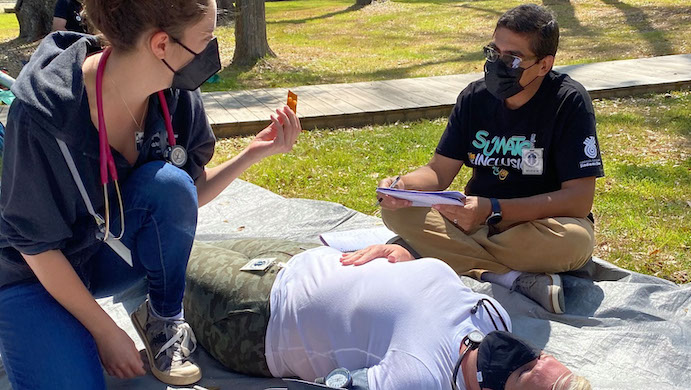
National Registry Certification examinations evaluate the competence of EMS
practitioners at a variety of levels, including Emergency Medical Responder (EMR),
Emergency Medical Technician (EMT), Advanced Emergency Medical Technician
(AEMT), and Paramedic.
NREMT credentials are either required for an initial license or accepted for legal
recognition or reciprocity in all 50 states and Puerto Rico. That makes it easier to
maintain
Six Tips on How Best to Respond to a Medical Emergency
Medical TrainingIt’s pretty well known that we here at The National Center for Outdoor & Adventure Education (NCOAE) are experts when it comes to training our students how to respond to medical emergencies in remote or wilderness settings. Less known is the fact that we also educate anyone interested in training that satisfies the eligibility requirements for the National Registry of Emergency Medical Technicians.
As a result, we teach our students to recognize that medical emergencies can happen anywhere and at any time. And it’s how we respond to those emergencies that makes all the difference in the world.
Below are tips in six categories — including safety, recognition, requesting help, patient communication, and being prepared — when handling a medical emergency.
Safety. Don’t be afraid to help, but don’t become part of the emergency. Use extreme caution near roadways or in hazardous environments. Take a few extra seconds to stop traffic or put on your life jacket.
Recognize that an emergency is happening. Whether you’re dealing with a friend or a stranger, if something seems wrong, ask if they are OK. When is something an “emergency?”
- Breathing: When someone is having trouble breathing, always consider it an emergency.
- Circulation: Many conditions, including heart attacks, can cause the heart to have difficulty pumping blood and can be rapidly fatal. Don’t wait, assume.
- Significant traumatic injuries: Falling from high places or being hit by a car are obvious examples of events that can cause significant injury. However, even if the person involved seems OK at first, assume there are unseen internal injuries.
- Neurologic problems: Any time the brain does not seem to be functioning correctly — even if it’s only mild confusion. Or if someone can’t use/feel one or more of their extremities. These are all emergency situations.
Call for help. This may be as simple as (more…)
TALK TO US
Have any further questions about our courses, what you’ll learn, or what else to expect? Contact us, we’re here to help!
